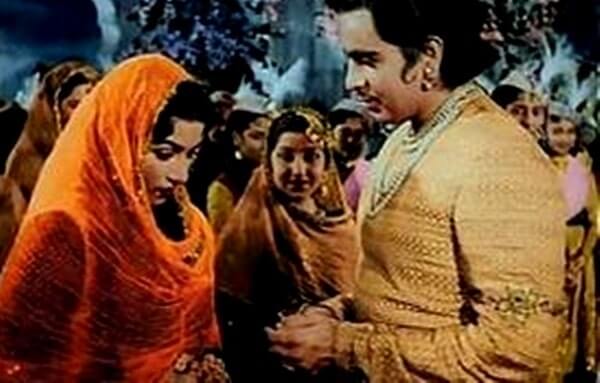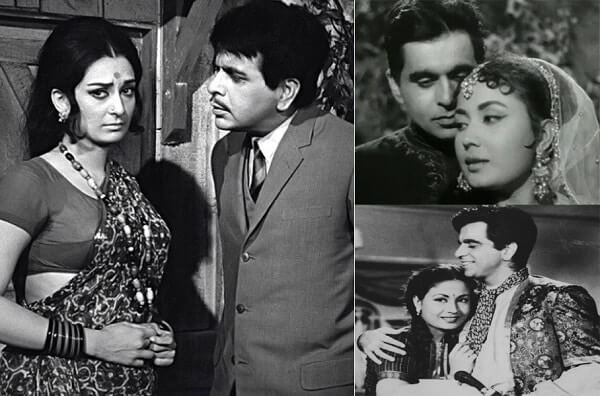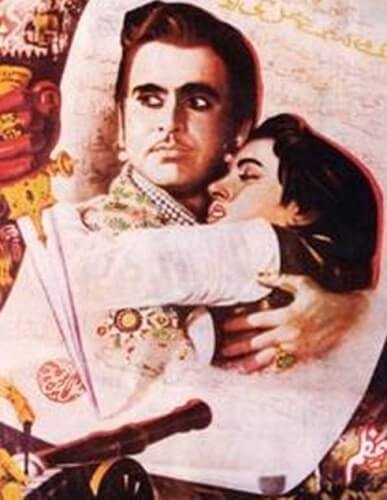“Hello, Yusuf Bhai se baat karwayein?” “Dilip Saab is not available right now, who is calling?” This was the tonality of many conversations when I was at the Illustrated Weekly of India in 1990. I was unable to breach fort Dilip Kumar because John his secretary wouldn’t allow me to.
However, I was persistent because as a reporter it was my job to get the interview. In any case I had this fascination for Dilip Kumar, though I had personally grown up on Rajesh Khanna and Amitabh Bachchan. There was an element of mystique about Dilip Kumar. So, I kept calling and John kept fobbing me off. There were excuses like, “Abhi Dilip Saab surya ast dekh rehen hai” (Dilip saab is now watching the sunset).
Finally, he caved in and Yusuf Khan came on the line one day. Remember, this was an age when there were no mobile phones. I pitched my interview to Dilip Kumar, not before him telling me in his inimitable voice: “Kya John aapko tang kar reha hai?” (Is John troubling you). I told him it was impossible to reach him. In a flash he said, “Take my bedside number, I pick it up myself.”
Wowie, I told myself, imagine Dilip Saab taking your call. Then of course, he asked me why I wanted to interview him and given that he was not in the news it didn’t make sense: “Aaj kal toh hum khabron mein bhi nahin hai, na hum zyada role kar rehen hai, toh aap kyun karna chahte hain interview? Kaun padna chahega hamara interview?”
My reply was very clear. He was Dilip Kumar and he didn’t have to be in the news. He was evergreen and like Peter Pan embedded in our memory recesses. Only a year later, Subhash Ghai convinced him and Raj Kumar to do Saudagar (1991). Actually, Ghai brought him back with three tour de force movies — Vidhata (1982), Karma (1986), and Saudagar, which reconnected him with a new generation of movie-goers and brought him back into our stream of consciousness. While the lion was in winter, it was Manoj Kumar’s Kranti in 1981 that returned him to the world of cinema.

Why this fascination for Dilip Kumar?
I have always been a movie junkie and my first watch of a Dilip Kumar film was Naya Daur, a revolutionary presentation from B.R. Chopra which threw into stark relief the village vs industrialisation bogey, an extension of the man vs machine debate with a strong underpinning of capitalism vs socialism.
The thrilling tonga clash against a bus with Dilip Kumar driving the tonga and Ajit using his bodily strength to bolster a bridge are captivating metaphors for the underlying credo of the film. The entry of a bus service into a sleepy hollow acting as a disruptor.
I noticed at a young age how Dilip Kumar spoke softly to make his point. I asked the late B.R. Chopra once on why he made Naya Daur. Chopra, one of the doyens of Hindi cinema, always made thought-provoking films with social messaging. Chopra had told me that he wanted to capture the advent of change in a new India, with the leitmotifs of a tonga vs the bus as a real-time example of what was happening at that time in India.
The next abiding memory of Dilip Kumar is in the seminal Mughal-e-Azam (1960), where he utters his first dialogue, the method actor in body armour talking to Ajit (Durjan Singh) — “Yeh zakham nahin phool hain … yeh katil hi nahin dildar bhi hain yeh, shaq-e-gul bhi hain, talwar bhi hain.” Sahib-e-Alam aka Salim had arrived. The movie has innumerable moments — romantic with Madhubala, engaging and withering looks and dialogues exchanged between him and Akbar (Prithviraj Kapoor), and of course Durga Khote’s motherly love for Salim.
All told, it is a classic and though before my time, it was an educative journey for any filmgoer. Dilip Kumar, the king of tragedy, has a different look and feel about him in K. Asif’s timeless classic. Even now I enjoy some of these moments in the colour version on YouTube. Then of course there are the two crown jewels in Dilip Kumar’s treasure chest — Gunga Jumna (1961) and Devdas (1955).
Many say that Dilip’s brother Nasir Khan stole the thunder from him, but Dilip Kumar has many films in his oeuvre and while he had a 54-year-long career, he made only 59 films during that period and long before actors like the Khans started making one film a year, he used to do just one film annually. In fact for a while he took a hiatus from cinema, and then in 1961, 64, 66, 67 he made Gunga Jamuna, Leader (1964), Dil Diya Dard Liya (1966) and Ram Aur Shyam (1967), respectively. Again in 1972, 1974, 1976, he made Dastaan, Sagina, and Bajrang. Between 1976 and 1981, when he made Kranti, he pretty much took sanyas from celluloid.
When tragedy took a toll
It is said that a slew of melancholy roles in the 1950s drained him completely, impacting his mental health. Consulting a shrink in London (referred to him by Laurence Olivier), Dilip Kumar was given the antidote to melodrama — do light, breezy comic roles for respite.
Devdas was Tragedy Central for the meister. A succession of lighter films like Azaad and Kohinoor followed. But the best was yet to come. In the 1960s, Dilip Kumar returned with a bang displaying a spanking new brand of comic timing and new-found effervescence in Ram Aur Shyam and then Gopi. Sadly, in the 1970s the lustre began to wear off with back-to-back flops such as Gopi, and Sagina.
Classic act
From Tragedy King in Devdas to the many varying shades of Dilip Kumar that started emerging with Mughal-e-Azam and then Gunga Jamuna, to a village yokel in Ram Aur Shyam and Gopi. Explaining his brand of method acting, he said: “I realised early in my career that my screen presence should essentially have something of my own personality. My personality was not flamboyant or given to exhibitionism of any kind. For example, it’s not that I consciously developed a style of delivering dialogue in a soft voice. That’s the way I speak in real life too.

“My father never shouted or ranted even when he was upset. My mother was gentle and docile. Even at work, I befriended people who were simple and refined. Real-life influences impacted my acting style to a great extent in the early stages. Because that’s where I found my inspiration, especially since I had to be my own instructor.”
His voice often sounded muffled as he mumbled his way, but that was what defined the man’s acting master class.
Strangely, my favourite Dilip Kumar has always been Sunghursh with his favourite co-star Vyjanthimala, the deadly dangerous Jayant, and of course Balraj Sahni and Sanjeev Kumar. The face-off with the two was simply outstanding, with Dilip Saab mesmerising as always. While the movie has been panned by many critics and commercially too it didn’t do well, for me, it embodies Dilip Kumar.
Though Dilip Kumar is believed to have sought counselling for improving his mental health, there could also have been an emergence of a mid-life crisis driven by age catching up with the superstar and plagued by self-doubt, just like the contemporary condition of the three Khans who are struggling to find their feet in the face of southern godzillas.
The three Khans are ageing superstars making commoditised cinema and not attempting to take on breakthrough roles. This is costing them with no audience recall. The worst part is that all three are playing hide and seek with cinemagoers, deferring their releases for fear of failure. Dilip Kumar sensed this and graduated to more mature patriarchal roles successfully. That was his third wind.
Take three… and action
One of the piece-de-resistance moments in his career where he appeared to be bested in a cinematic beat down was the match-up with tyro Sanjeev Kumar in the chess scene in Sunghursh. The bedrock of the scene has Sanjeev Kumar trying to take revenge by plotting to kill his host — Dilip Kumar. It is most memorable. The method actor vs the wannabe, who demolishes the master’s silence with a rousing bravado, remained with the audiences for a long time.
Even Dilip Kumar was compelled to heap praise on his colleague. They were reunited many years later in Vidhata (1982). These are only a few of the gems from Dilip Kumar’s treasure trove, loyal to his craft and never letting crass commercialism taint it.

Dilip Kumar was smart, malleable and ductile as he adapted to the prevailing genre of multi starrers — Shakti, where he was understated but Amitabh Bachchan played the silent counter to him. Protagonist vs antagonist — Bachchan: “Mere baap ne do shaadiyan ki hai, ek meri ma se aur apni naukri ke saath … main woh badnaseeb beta hoon, ki jis dawa ko chhoo loon woh meri ma ke life mein zeher ban jayegi.” Dilip Kumar: “Jo log sachai ki tarafdari ki kasam khate hain … zindagi unki badi kadi imtihaan leti hai.”
Ramesh Sippy’s casting coup may not have fired the BO, but it remains an acting class par excellence. In the end let Dilip Kumar sum up his tradecraft: “An actor needed to strengthen his instincts because the duality between the real and unreal cannot be sorted out by the mind, which is more concerned with truth and logic in any normal situation … It is only instinct that will help you absorb what you have to absorb from the script and drive you to render a performance coated with realism and conviction despite the knowledge of it all being fiction and drama.”
Nasir Khan pitted against his real brother, or Amitabh Bachchan tangoing with his father, or the Sahib-e-Alam, daggers drawn with Prithvi Raj Kapoor, or the romance with Madhubala and Vyjanthimala, time has not dimmed the iridescence and luminosity of his persona.




